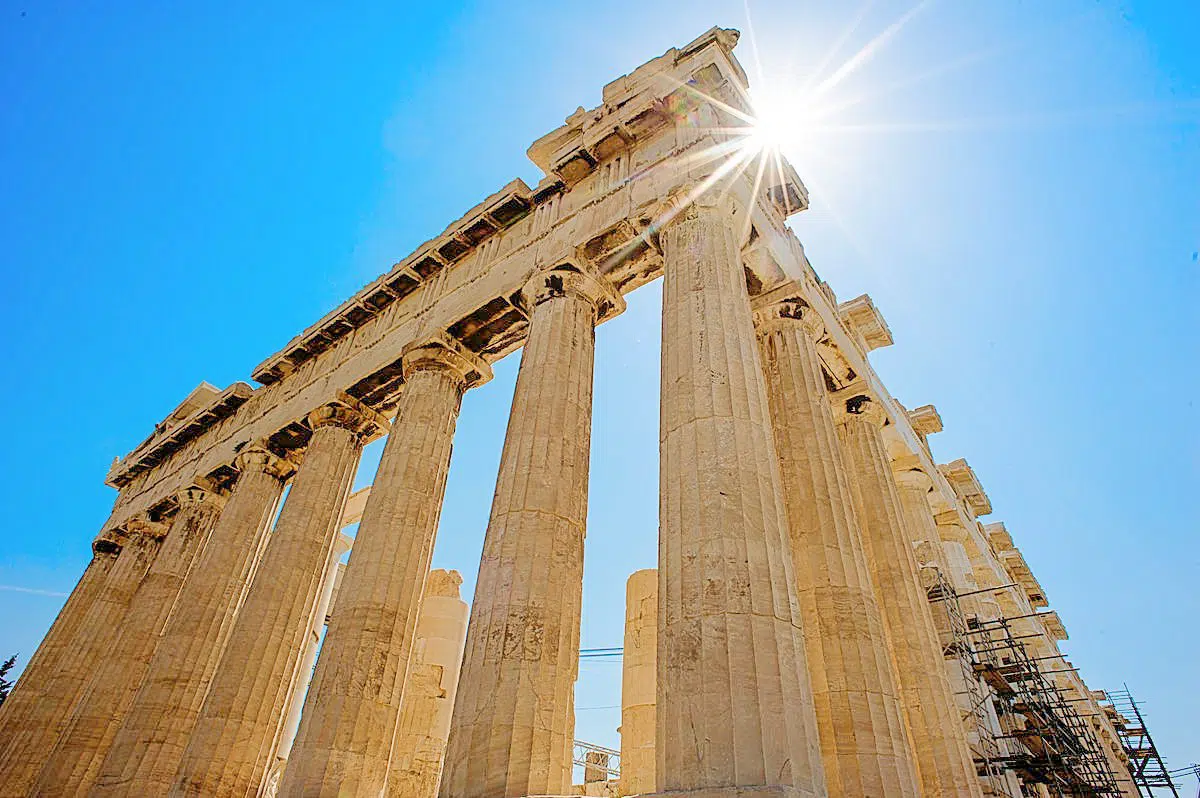
Google has added 3D monuments to its search results, including the Parthenon in Athens. The search engine has started incorporating augmented reality (AR) objects into its Google Search feature, which shows results in 3D for space, science and athletes, and animals — and now, popular monuments across the globe.
Google’s view of the 3D monuments allows users to rotate the landmarks and zoom into their details. Users also have the option to overlay a monument into their space with their camera lens using the “View in 3D” option.
The feature allows you to take pictures and videos with the 3D-rendered monuments. The Parthenon — one of Greece’s most culturally significant landmarks — is available as a 3D object. The Parthenon is an ancient temple located in the Athenian Acropolis in Athens, Greece.
The site was originally dedicated to the worship of the goddess Athena and was once filled and decorated with sculptures that were famously removed from the site by Lord Elgin in the 19th century.
Here is a complete list of world monuments you can explore in 3D with Google’s new feature:
| Abbaye du Mont-Saint-Michel | Conservatory of Flowers | Neuschwanstein Castle | St. Patrick’s Cathedral |
| Alcatraz Island | Eiffel Tower | Niteroi Contemporary Art Museum | St. Paul’s Cathedral |
| Alhambra | Empire State Building | One World Trade Center | St. Peter’s Basilica |
| Amazon Theatre | Ferry Building | Palace of Versailles | Statue of Liberty National Monument |
| Arasaka Imperia Residence | Flatiron Building | Palace of Westminster | Stonehenge |
| Arc de Triomphe | Giotto’s Bell Tower | Palais Garnier | The Angel of Independence |
| Aztec Stadium | Golden Gate Bridge | Palazzo Vecchio | The British Museum |
| Basilica of Our Lady of Guadalupe | Japan National Stadium | Pantheon | The Centre Pompidou |
| Basilica of Santa Croce in Florence | Kaminarimon Gate | Panthéon | The Metropolitan Museum of Art |
| Basilica of Santa Maria Novella | Kensington Palace | Parthenon | The Painted Ladies |
| Big Ben | La Sagrada Familia | Piazza della Signoria | The Palace of Fine Arts |
| Brooklyn Bridge | Leaning Tower of Pisa | Piazza Navona | Tokyo National Museum |
| Buckingham Palace | Les Invalides | PIER 39 | Tokyo Skytree |
| Campidogilo square | London Eye | Pitti Palace | Tokyo Tower |
| Capela Curial de São Francisco de Assis | Louvre Museum | Placa de Catalunya | Tower of London |
| Castel Sant’Angelo | Magic Fountain of Montjuic | Ponte Vecchio | Trafalgar Square |
| Castle of Good Hope | Meiji Jingu | Rhodes Memorial | Trevi Fountain |
| Cathedral of Barcelona | Mexico City Metropolitan Cathedral | Rockefeller Center | Union Buildings |
| Cathedral of Brasilia | Monument of the Ninos Heroes | Roman Forum | Ushiku Building |
| Cathedral of Santa Maria del Fiore | Monument to the Revolution | Sacré-Cœur | Voortrekker Monument |
| Cathedrale Norte-Dame de Paris | Moses Mabhida Stadium | San Francisco – Oakland Bay Bridge | Westminster Abbey |
| Chapultepec Castle | Mount Rushmore National Memorial | São Paulo Cathedral | Yoyogi National Stadium |
| Christ the Redeemer | Musée d’Orsay | Sensō-ji | Zojoji |
| Coit Tower | National Museum of Nature and Science = | Solomon R. Guggenheim Museum | |
| Columbus Monument | National Palace | Sri Sri Radha Radhanath Temple |
The Parthenon’s design eccentricities are strengths
The Parthenon is one of the most iconic structures in the history of Western civilization. It stands in splendor on Acropolis Hill in Athens, and has stood like that for an astounding 2,500 years. Experts believe that the ingenuity of the Parthenon’s construction has allowed it to miraculously survive the ravages of time, nature — and mankind.
For decades, engineers, architects and scientists have wondered exactly how this ingenious structure has successfully stood the test of time to continue to tower majestically over the Greek capital.
This architectural and engineering wonder, with its height, width and depth defining the very concept of perfect proportion, has kept its secrets for many centuries since its completion in the year 438 BC. That is, until engineers and architects recently revealed the Parthenon’s design and construction secrets.
Several studies have found that despite the fact that the temple of the Parthenon does not even have a foundation it has triple anti-seismic protection which is responsible for keeping it upright after the many earthquakes and upheavals of the past 25 centuries.
According to civil engineer Niki Timotheou, studies of its architectural and structural form have shown that the Ancients had already discovered what we today call “seismic insulation.”
The temple, according to Timotheou, successfully contradicts all theories of modern civil engineering because even though it has no foundation whatsoever, and stands right on bedrock, it has three different means of insulating itself against earthquakes.
See all the latest news from Greece and the world at Greekreporter.com. Contact our newsroom to report an update or send your story, photos and videos. Follow GR on Google News and subscribe here to our daily email!



